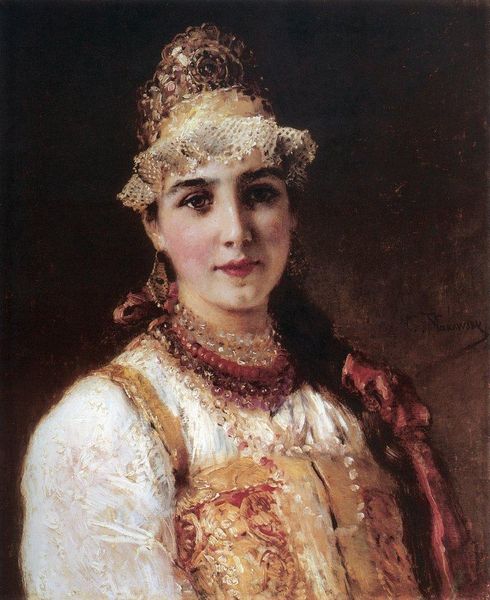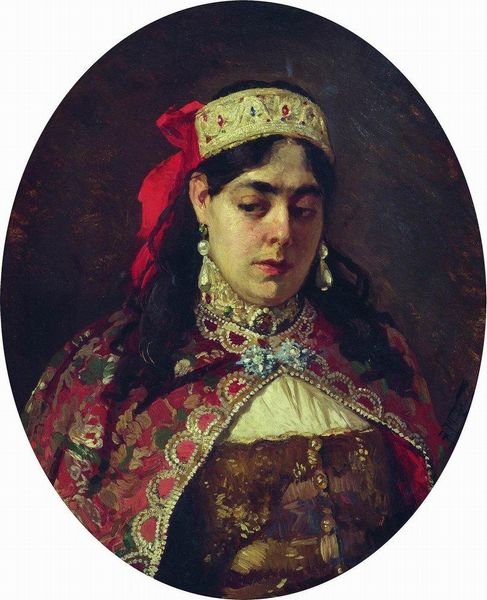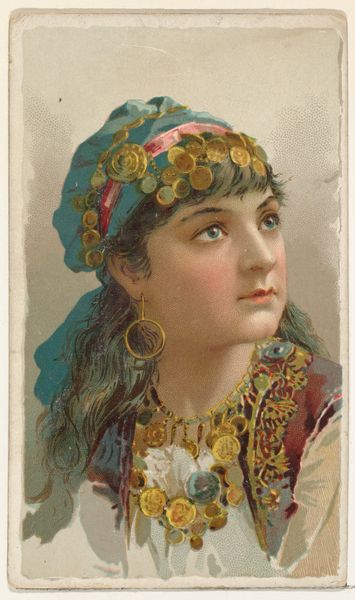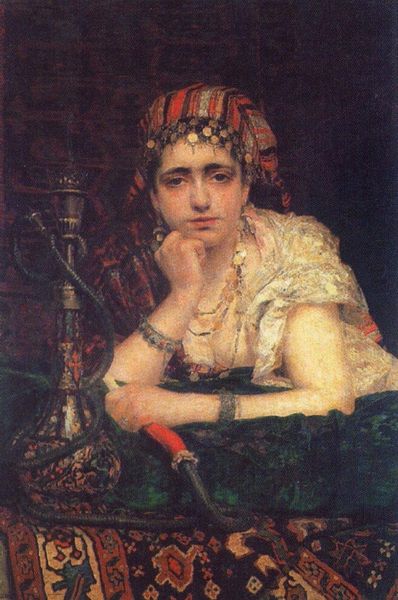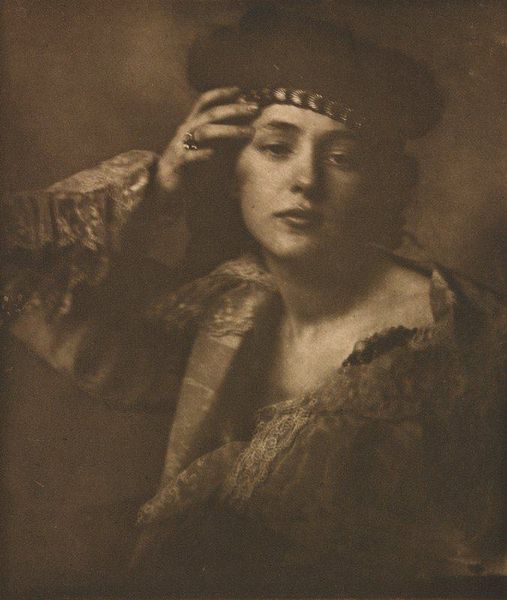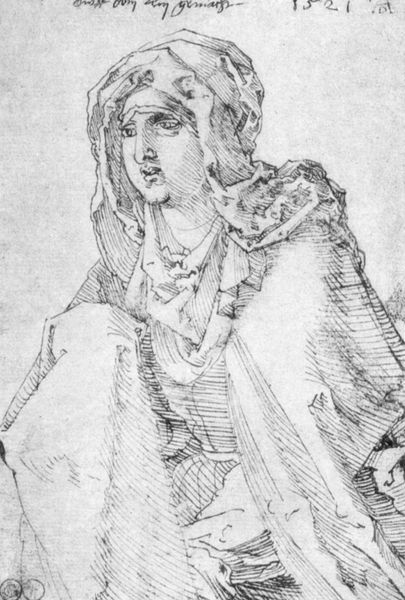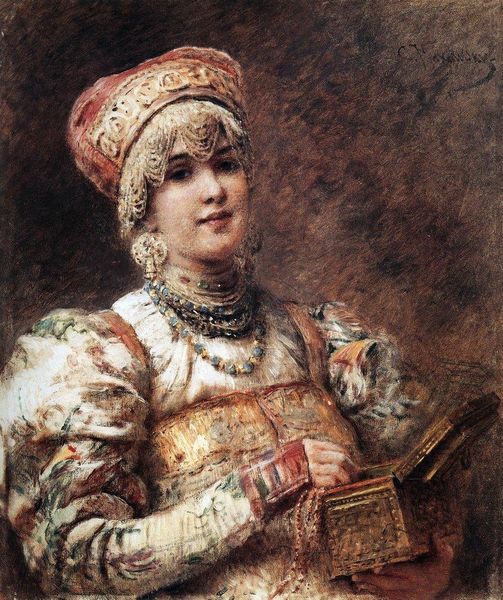
Copyright: Public domain
Editor: This is Vasily Polenov’s “Montenegrin Girl,” created in 1876, and it looks like it's a charcoal and pencil drawing. The detailing on her clothes and headwear is so intricate, yet the drawing overall feels unfinished, almost like a study. What strikes you about it? Curator: Well, it’s interesting to consider this piece through the lens of its materiality. We see a "Realist" approach, yes, but what was Polenov’s relationship to the materials themselves, charcoal and pencil? These are relatively inexpensive and easily accessible materials. This leads me to consider whether Polenov, by using these accessible materials, democratizes the portraiture traditionally reserved for the upper classes and royal families. Does it become a different type of cultural object by its means of production? Editor: That’s fascinating! I hadn’t thought about the choice of materials in that light. The fact that he chose relatively 'common' materials might also relate to a broader societal trend. But why focus on this particular sitter and not a Russian peasant woman for example? Curator: Exactly. The act of depicting this “Montenegrin girl” isn't just about representing her likeness. It is about the circulation and the display of cultural fascination of that specific time in history. What social, economical, and cultural powers enabled this portrait to become a subject of fine art instead of remaining a simple study for private viewing only? Editor: So, it’s less about *who* she is and more about how and why she is portrayed with these readily available resources. What message was the making trying to convey, consciously or unconsciously? Curator: Precisely! What does it tell us about the access, labor and production of this piece that other art forms conceal? Editor: That definitely gives me a new way to appreciate it. I was initially drawn to the face, but now I find the story behind the drawing itself so much more compelling. Thanks for broadening my view. Curator: And thank you. Reflecting on how even the simplest of materials influence meaning reveals so much about both art and society.
Comments
No comments
Be the first to comment and join the conversation on the ultimate creative platform.
